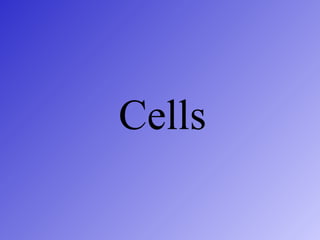The cell is the basic unit of all living things. Cells contain organelles that allow them to carry out life functions like respiration, protein production, and waste removal. Plant and animal cells differ in structures like the presence of a cell wall and chloroplasts in plant cells. Cells come together to form multicellular organisms through different levels of organization - tissues, organs, organ systems - allowing complex life forms to develop, function and reproduce.












































